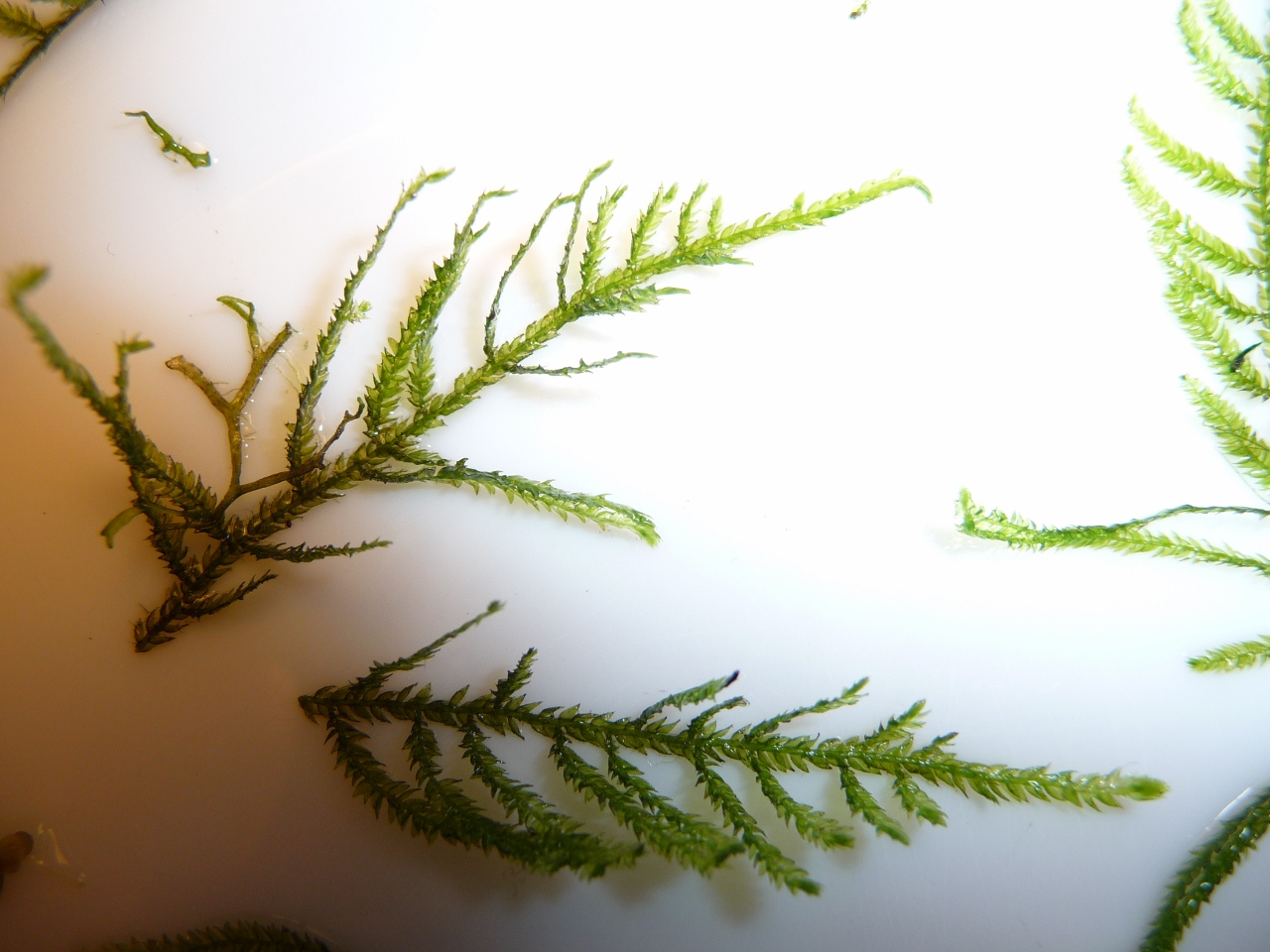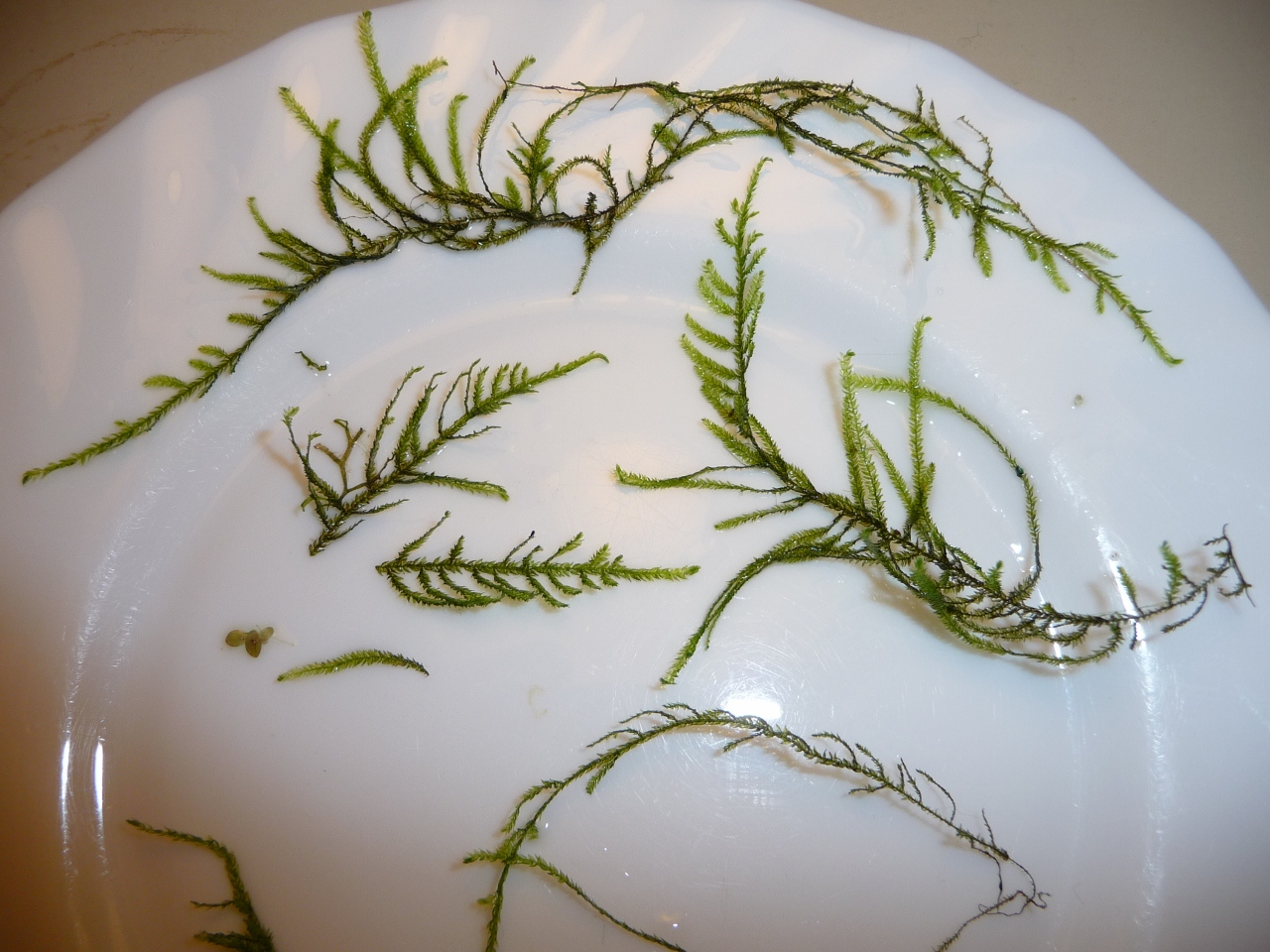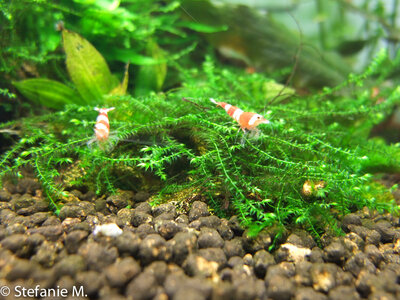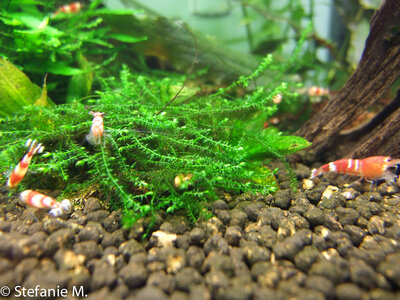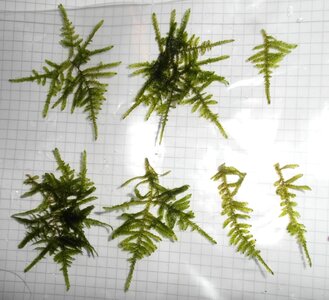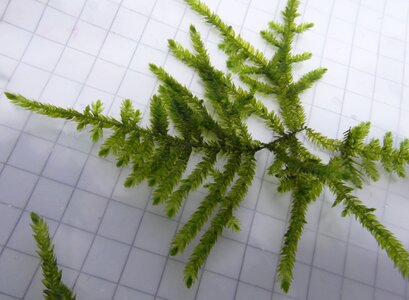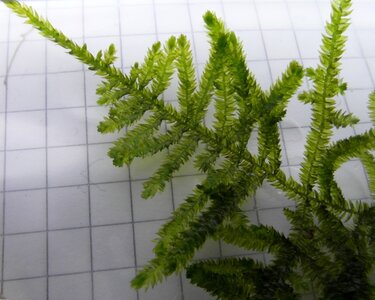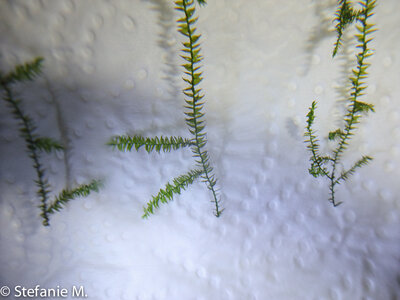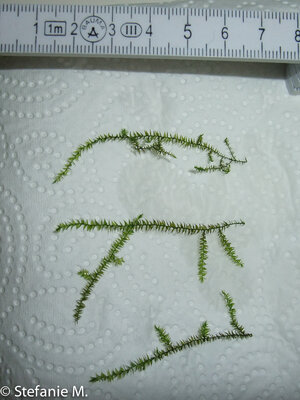Hallo Moni,
der Peacock/Spiky-Vergleich auf aquamoss.net ist für mich 'ne schwierige Sache... leider kommentiert der Autor das nicht, aber offenbar meint er mit den getrennten Einträgen und den Fotos, dass es verschiedene Moose sind. Demnach scheint sein "Peacock moss" ein bisschen kompakter und dichter verzweigt zu wachsen als sein "Spiky" - gleiche Wuchsbedingungen vorausgesetzt.
Blatt-Mikroskopfotos von beiden... auch schwierig. So breite, fast eiförmige Blätter wie im aquamoss.net-"Peacock"-Eintrag sehe ich bei meinen als Peacock und Spiky gelabelten Moosen nicht wirklich. Aber an derselben Pflanze variiert die Blattform ziemlich. Die älteren Abschnitte der Seitenzweige haben schmalere Blätter als der Haupttrieb.
Und wenn ich mir die anderen Fotos der Moostriebe auf der Seite angucke, sehe ich keine deutlichen Unterschiede. Auch auf den "Peacock" Fotos auf aquamoss.net insgesamt eher schmale Blätter.
Die Sache scheint einfach ungeklärt zu sein. Nachdem Loh Kwek Leong 2005 das hier geschrieben hatte, gab es offenbar keine Fortschritte:
http://www.aquaticquotient.com/forum/showthread.php/49710-Mosses-and-the-men-who-love-them-Part-VI
Zitat:
... As you can see, they are lovely mosses. But are they different? When I first looked at Tan SW's microscope pictures, I thought they were. But on closer examination, however, I think they are the same. Tan's microscope pictures are pretty good but when the professor saw them, he said they aren't good enough. The cell structures in the pictures aren't clear. The professor needs to see them in greater detail. Also, the closed-up picture of the leaf basal corner which is an important character in the species identification isn't available.
Despite the absence of good photographs or a live specimen however, the professor thinks the Peacock and the Spiky are the same moss. We don't know where the moss originates from but if it's from China, the professor believes it could be Taxiphyllum giraldii, a moss that is common there. The professor is considering asking his colleagues in China to send over specimens of the T. giraldii to make comparisons but he isn't sure if he has the time to do it.
We may never know for sure but there's something important I have to tell Tan SW. In his last email to me, the professor said the common name Peacock Moss shouldn't be used. This is because there's already another moss with such a common name. Although common names are not registered anywhere and there's no authority on such names, using the same common name for 2 different mosses would only cause confusion later. I hope you understand this, Tan. Please don't take it badly. I myself have been guilty on at least 2 occasions of giving common names to various mosses but in both instances, I was fortunate that the common names weren't already taken. If you like to know, the Peacock name is used on a moss known as Hypopterygium tenellum. Here's a pic of that moss: ...
Dabei mag auch eine häufige Verständigungssschwierigkeit eine Rolle spielen: wenn Botaniker bzw. Biologen von der "gleichen Art" reden, meinen sie nicht unbedingt dasselbe wie Aquarianer und Pflanzenliebhaber. Auch Individuen/Klone/Formen, die sich unter gleichen Bedingungen etwas voneinander unterscheiden (Unterschiede also genetisch fixiert), können biologisch gesehen zur gleichen Art zählen.
Vorausgesetzt dass es leicht unterschiedliche Moose unter den beiden Namen Peacock und Spiky gibt (oder gegeben hat): bei so großer Ähnlichkeit kann es leicht zu Verwechslungen gekommen sein, so dass dasselbe Moos (welches von beiden?) z.B. von Anubias "Spiky" und von Aquasabi "Peacock" genannt wird.
"Christmas": dann hast du sicher das Taxiphyllum erwischt, das als vermeintliche Vesicularia montagnei, "Christmas moss", im Handel ist. In einem der anderen Threads hatte ich schon vermutet, dass es mit "Peacock" u./o. "Spiky" identisch ist. Aber das könnte wieder mal nur durch Vergleichskultur getestet werden.
Gruß
Heiko

